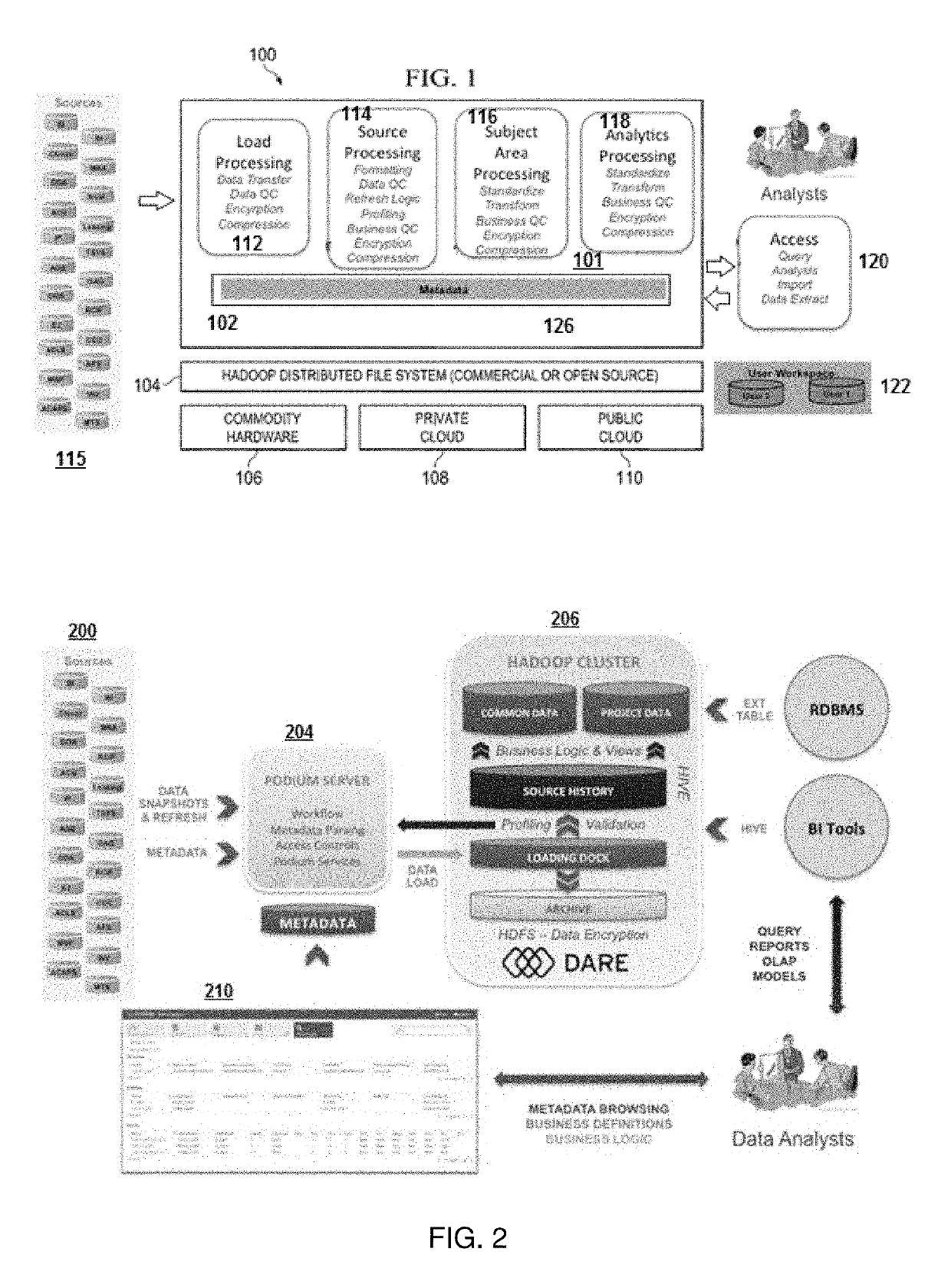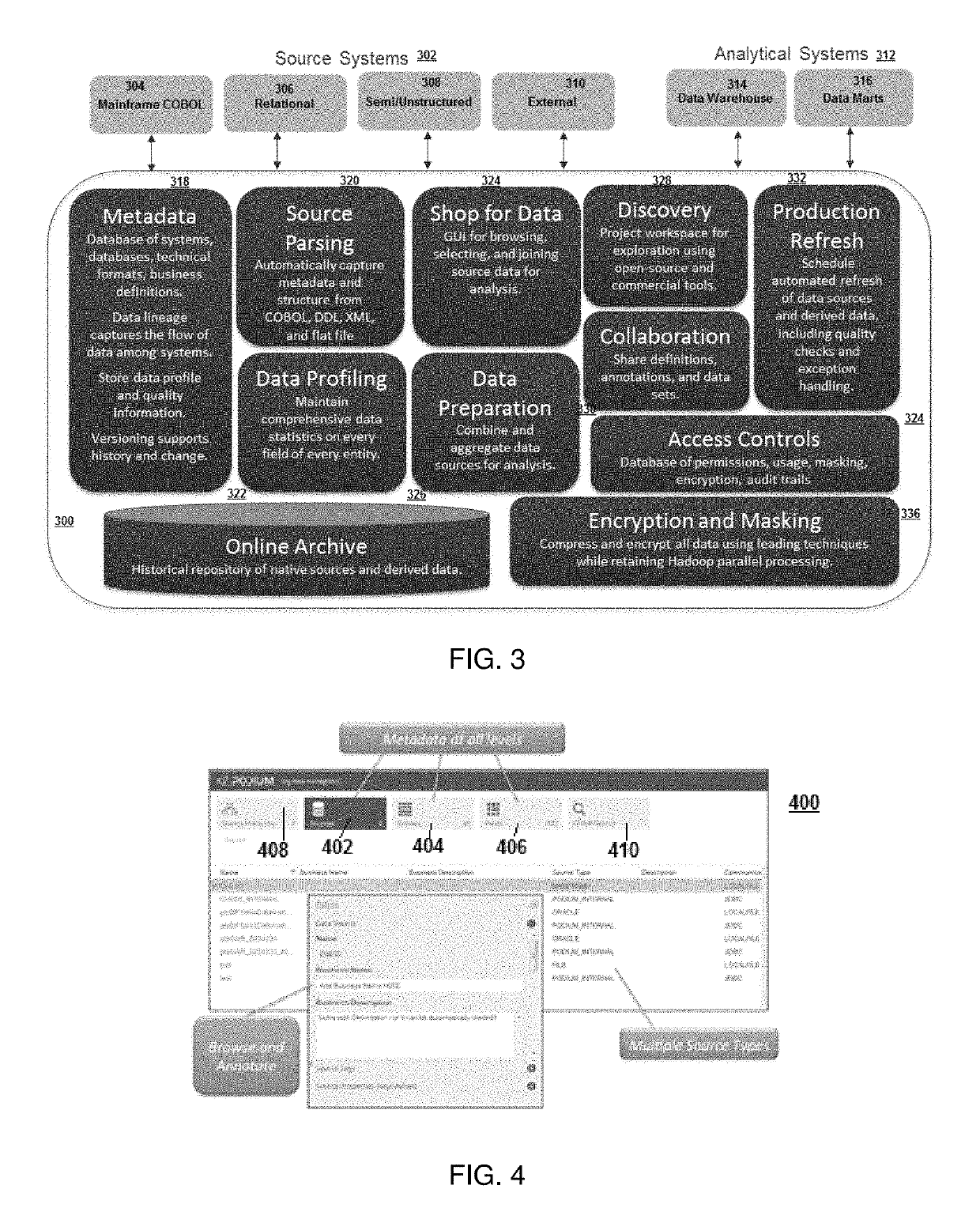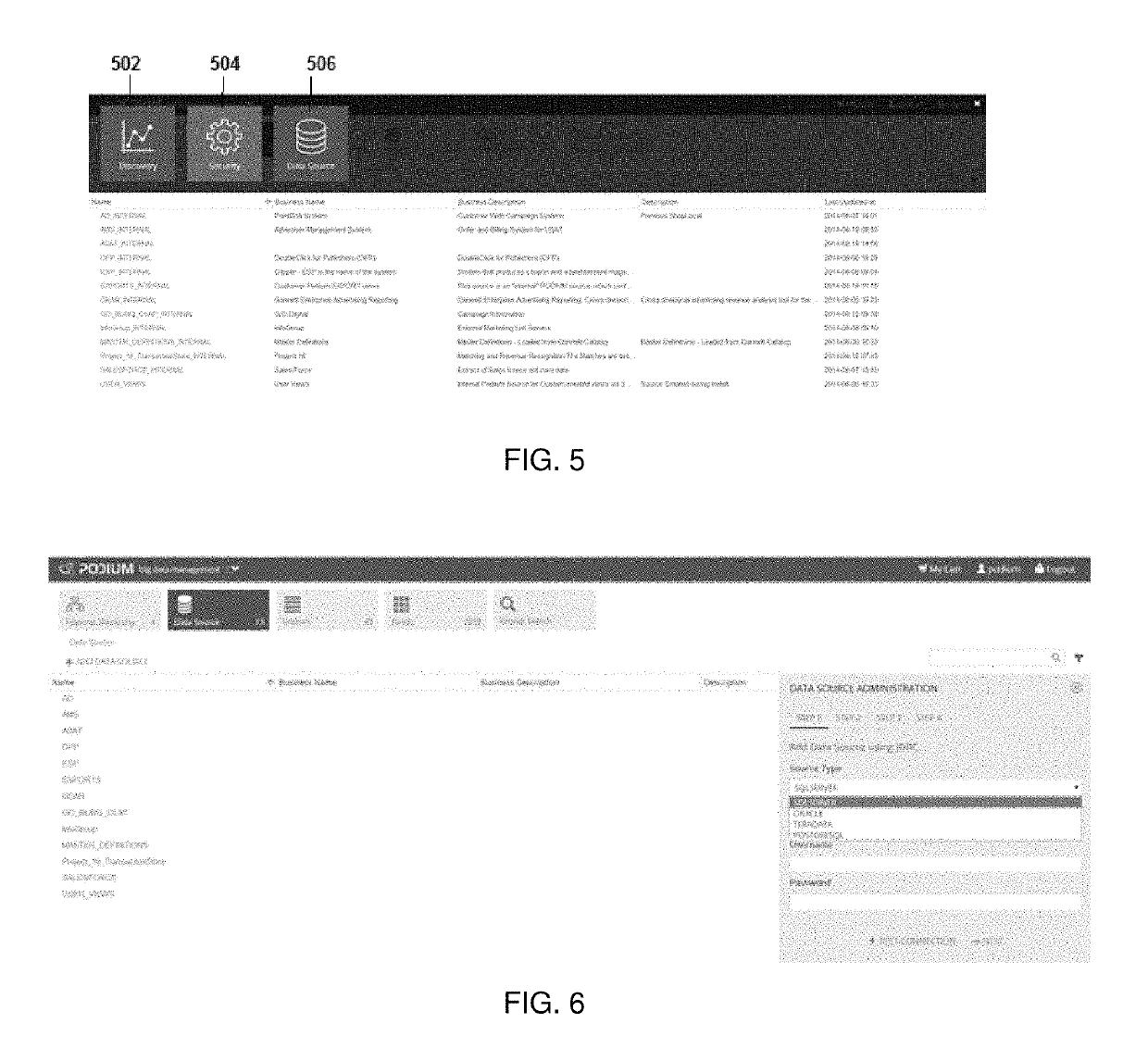Data management platform using metadata repository
a data management platform and metadata technology, applied in the field of secure, large-scale data storage, can solve the problems of difficult processing, immature public domain software stack, frequent instability, etc., and achieve the effect of facilitating data management and rapid provisioning and managing
- Summary
- Abstract
- Description
- Claims
- Application Information
AI Technical Summary
Benefits of technology
Problems solved by technology
Method used
Image
Examples
Embodiment Construction
[0021]FIG. 1 depicts the data management platform of this disclosure. As will be described, at a high level the system 100 of this disclosure preferably comprises a data management server (which, in turn, comprises a set of platform services 101 components) that sit on top of metadata repository 102. The system 100 overlays a distributed file system 104, such as Hadoop Distributed File System (HDFS) cluster, which in turn executes in one or more distributed computing environments, illustrated by commodity hardware 106, private cloud 108 and public cloud 110. Generalizing, the bottom layer typically is implemented in a cloud-based architecture. As is well-known, cloud computing is a model of service delivery for enabling on-demand network access to a shared pool of configurable computing resources (e.g. networks, network bandwidth, servers, processing, memory, storage, applications, virtual machines, and services) that can be rapidly provisioned and released with minimal management e...
PUM
 Login to View More
Login to View More Abstract
Description
Claims
Application Information
 Login to View More
Login to View More - R&D
- Intellectual Property
- Life Sciences
- Materials
- Tech Scout
- Unparalleled Data Quality
- Higher Quality Content
- 60% Fewer Hallucinations
Browse by: Latest US Patents, China's latest patents, Technical Efficacy Thesaurus, Application Domain, Technology Topic, Popular Technical Reports.
© 2025 PatSnap. All rights reserved.Legal|Privacy policy|Modern Slavery Act Transparency Statement|Sitemap|About US| Contact US: help@patsnap.com



